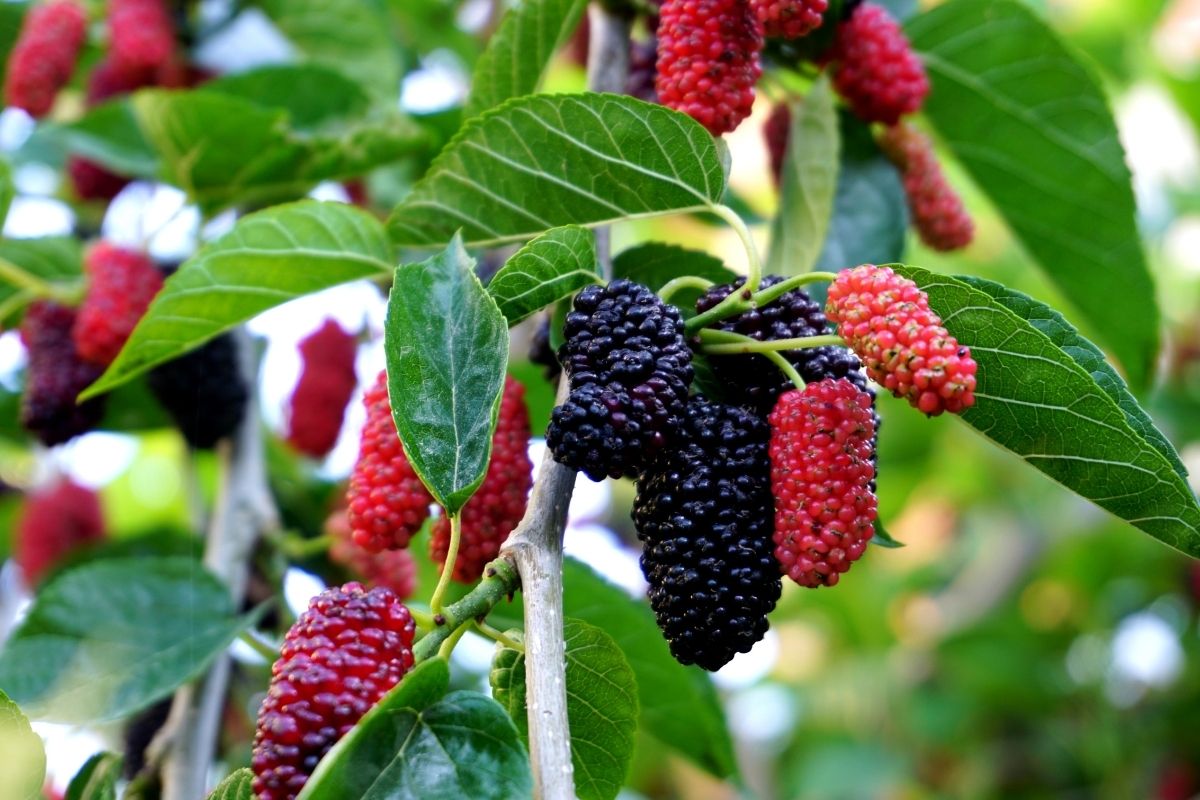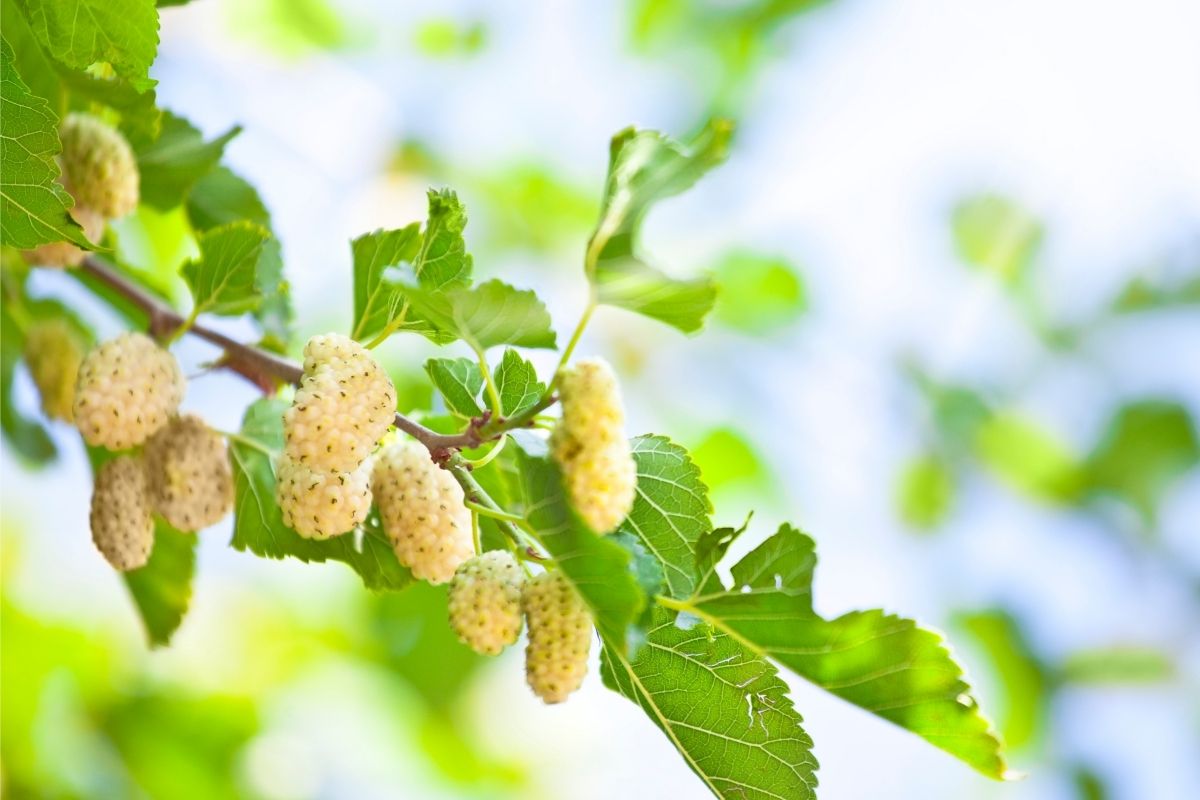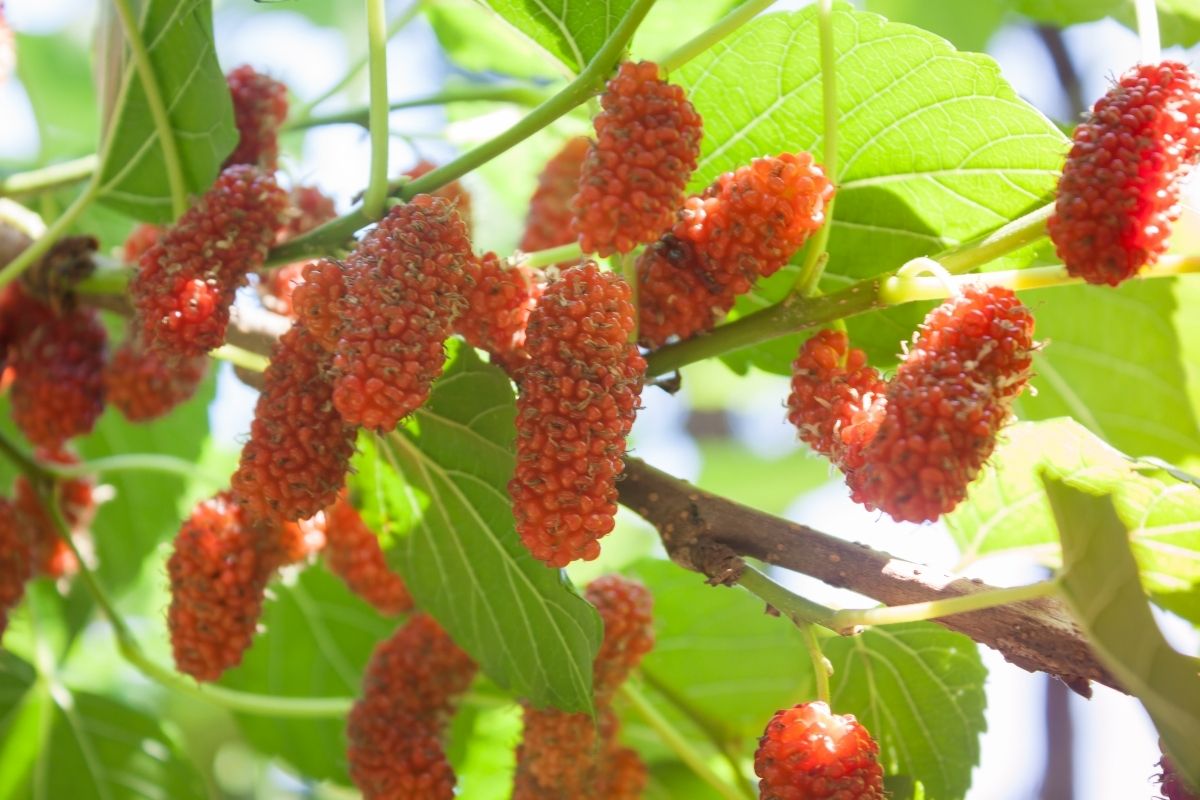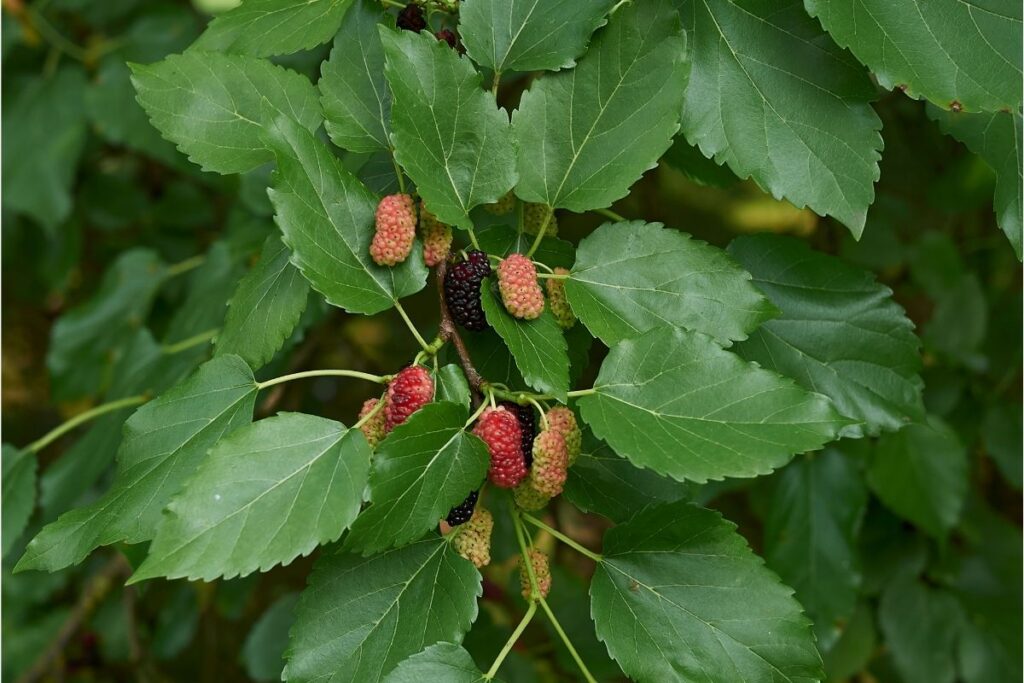The Mulberry fruits comes from a plant known botanically as the Morus Alba. The Morus is a type of short-lived tree that is fast-growing and medium-sized.

The genus is actually endemic to Asia, specifically bits of China, yet the tree produces fruit widely known as the ‘Mulberry’ which has its own significance in English and other European cultures.
Not regarding its native location, the tree is cultivated across Asia but also globally for its fruits and other uses.
Those who associate the Mulberry with the Morus genus are referring to three specific varieties, usually, that relate to the color of the fruit. Although there are more varieties and cultivars that also focus on the fruit, other cultivars focus on more ornamental varieties.
The fruit is particularly sought after in certain culinary circles, as the variety of trees produce fruit of varying sweetness. The leaves of the white mulberry tree attracts the silkworm. Additionally, the mulberry fruit is also eaten by the silk moth as well as other insects.
The cocoon is used to make silk which historically is very expensive, the Morus tree is historically what was used to make silk across the globe but especially in Ancient China and other parts of Asia.
In any case, the Mulberry is eaten purely for its taste which is often tart and sometimes sweet depending on variety but is often used in pies and other desserts.
The Morus tree is pretty fast grown and short-lived in terms of trees. While the Morus can grow to around 15-20 metres when mature, they usually have a similar lifespan to humans and often die off around 70-100 years in.
Although, one of the longest living known Morus trees was around 250 years in age.
1. Morus Alba (White Mulberry)

This variety produces the white mulberry fruit. The tree is endemic to parts of Central China and India, but is now naturalized basically everywhere thanks to large cultivation.
The foliage of the Morus alba is intricate and quite varied in its morphology. Rather interestingly, young shoots can create quite large leaves around 12 inches in length, but as the tree gets older these leaves can reduce to nearly half the size.
This speaks to the tree’s short-lived lifespan in comparison to other trees. Interestingly, the tree is typically grown in temperate environments where it remains deciduous, yet when grown in tropical regions it regularly remains evergreen.
The foliage of the white mulberry tree is what silkworms love to eat. This is almost single-handedly what brought silk about in the early world.
It’s said that one of the earliest examples of silk clothing was in 220 AD as Emperor Elgabalus wore a silk robe, we can expect this was made almost primarily as a result of the Morus alba’s foliage.
The fruit is similar morphologically to a blackberry or raspberry. Strangely, in the wild this species usually produces darker purple fruit, yet when cultivated it often becomes white or pink. The fruit is typically tasty and sweet, but not ideal for cooking purposes.
One thing this specific variety, Morus alba, is recognized for is the fact that they can release pollen extremely quickly. The stamen launches pollen out at around 380 miles per hour, which is half the speed of sound – crazy!
This literally the fastest recorded movement by a plant in the whole plant kingdom. This shows how advanced and amazing plant mechanics can be.
2. Morus Rubra (Red Mulberry)

This is perhaps the variety of Morus that is most enjoyed for its fruits. The fruit of the tree is particularly sweet and is often cultivated to be so. The fruit is therefore used often in desserts such as pies, as well as eaten raw.
One thing mentioned by the English colonists in their initial exploration of what is now Virginia mentioned how many Mulberries the Native Americans had and ate. The wood is also used to smoke meat, and the bark is also used by Native Americans to create clothing.
The Morus rubra grows to a smaller height than the White mulberry tree, the red mulberry rarely reaches 20 meters, most specimens coming to around 10-15 meters in height.
They survive for a similar time to other mulberry trees which can be ascribed as similar to a human lifespan, although these trees usually go over 1100 years when grown well. Moreover, the white mulberry is a little hardier than this variety, but they both do well in most climates.
Although, one difference between these two varieties is that the red mulberry has much larger leaves, at least twice as large, than the white mulberry. Although, despite their larger size, they are still second in favor to the white mulberry tree with silkworms.
The more mature silkworms might eat these leaves as they get older, but most young silkworms will only eat white mulberry tree leaves.
RELATED: 19 Different Types Of Mulberry Trees (With Pictures)
3. Morus Nigra (Black Mulberry)

The black mulberry tree is another variety of the Morus genus that has its own interesting uses. The tree is perhaps smaller than the previous two, being reported to grow to around 12 meters in height – the last a similar time to its fellow mulberry trees.
The black mulberry tree produces black mulberries that are particularly sweet. They are the sweetest and considered to be the best tasting fruit of the Morus genus, so are often cultivated for culinary usage.
It’s reported that the variety was introduced to the UK, where there are now many, to use as silkworm food and to create silk. It was eventually realized that silkworms much prefer the leaves of the white mulberry tree.
The fruit is often specifically black for this mulberry, hence its name. Yet, as other mulberry varieties can produce fruit that is black too, the tree is often misidentified. We can identify this variety specifically thanks to its foliage that is unique among the genus.
The underside of the Morus nigra foliage is often hairy and is uniquely so. There are now many old large Morus nigra specimens in England, although there are many more in an area of Slovakia, which led the Morus nigra to earn a prestigious RHS Award of Garden Merit.
4. Morus Alba ‘Pendula’

It’s worth mentioning this cultivar of the white mulberry tree that is cultivated for its ornamental qualities rather than its fruit. This type of mulberry tree is a weeping variety. Thanks to its drooping branches, the tree is particularly enchanting in any garden.
The leaves are glossy and dark and can occasionally form into heart shapes. The smaller trees will touch the ground with their foliage, which is quite fun.
Moreover, the leaves turn pleasantly yellow during the autumn. The tree is particularly beautiful, and beyond its aesthetic features it also produces fruit that is edible and can be used in the same ways other mulberry fruits can.
Final Thoughts
The mulberry tree, or the Morus genus, is a fascinating tree specimen. Not only does the tree produce amazing fruits that are a specialty in the culinary world, but the tree is also integral within the silk production of early periods.
Considering the tree is fairly short-lived it has fossils that can date back to the Pliocene period in the Netherlands which can be around 3000-5000 million years ago.
The spread of the Morus genus across the world and its strong population is likely thanks to both how it is spread by birds as well as the cultivation of the tree for silk production. Birds who eat the leaves and fruit excrete the seeds around the world as they migrate.
One thing worth considering about the genus is that many of its variants hybridize with each other, which can affect the population quite a lot. For instance, the Morus alba which remains Asian in its native environment can displace the Morus rubra which is more endemic to the West.
The white mulberry tree still remains one of the most widely cultivated within the genus, as the silkworm prefers the foliage of this tree.
Although, there are now easier methods of making silk than using the tree, some still enjoy the natural element it brings to the industry and the history of the tree within the textile industry.
Any of these Mulberry trees would be a great addition to any garden, they will likely outlast you when you plant them and while they won’t be around for a great period of time, in terms of trees, but will be a worthy specimen in your garden.
While you might not make silk, you will definitely get a lot of crumbles and pies out of these great trees.
Moreover, the mulberry tree isn’t that hard to grow, and part of its strong population is that even though they don’t last as long as other trees they are extremely hardy, naturalized to most environments, and also generally pest and disease free.
A mulberry tree could be the perfect addition to your garden that can last a long time while also having practical uses as well as aesthetic pleasure.
Editor’s Recommendations
How to Grow Bananas From Seeds? We Have All The Answers For You







